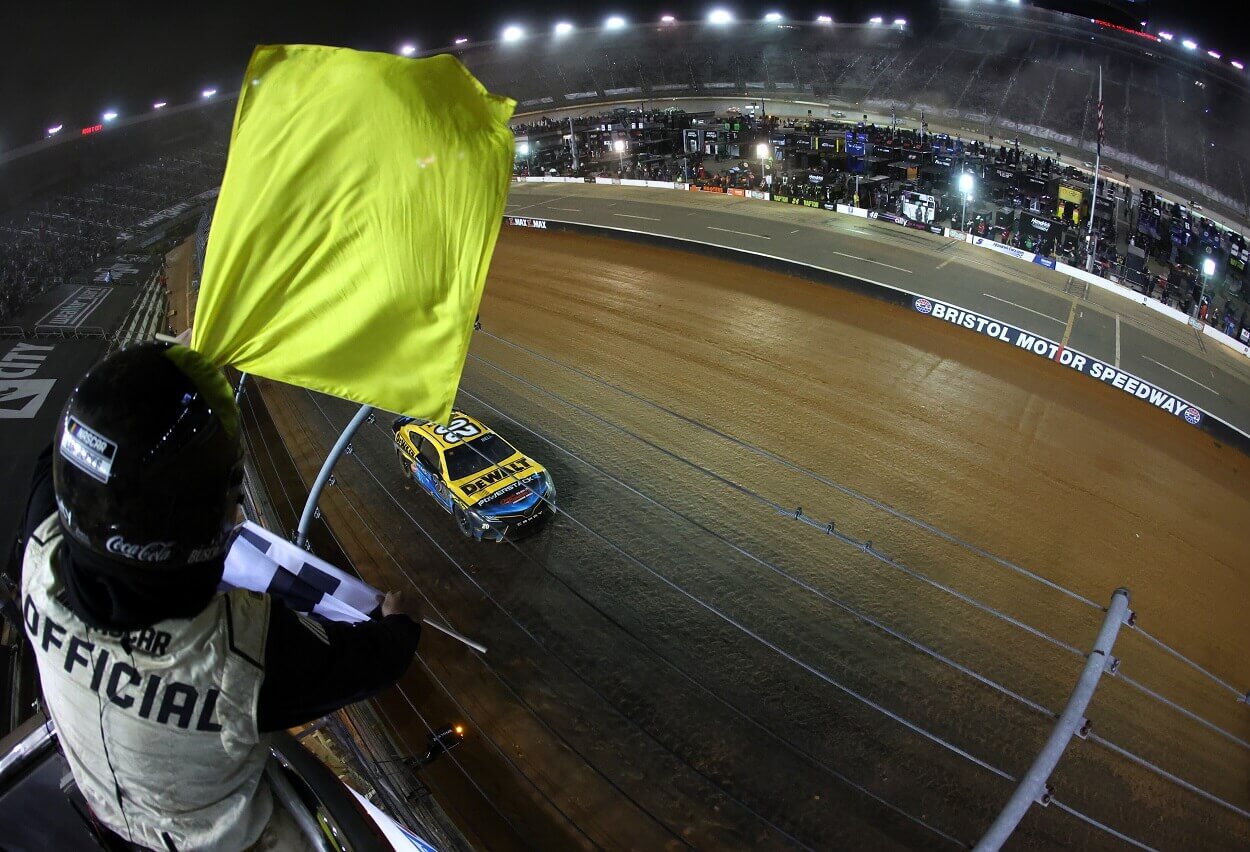NASCAR
NASCAR Needs to Address a Troubling Trend That’s Killing the Integrity of the Sport

The NASCAR Cup Series dirt race this past Sunday at Bristol Motor Speedway had reached its longest green-flag run of the race, largely thanks to the leniency of race officials who did not wave the caution flag for multiple incidents, only to reverse course with 15 laps to go.
Kyle Busch spun in Turn 4 but ended up at the pit road entrance when he finished spinning. He was off the racing surface and on a part of the track that was not used since the race did not include competitive pit stops. Truth be told, it was a spin much like several others throughout the 250-lap event that did not bring out a caution. And Busch’s wreck was arguably far less egregious than several others that NASCAR did not call for a caution.
The most likely determining factor, unfortunately, was not the safety of the competitors or fans but rather the competitiveness of the race. Eventual winner Christopher Bell had built only a half-second lead on second-place Tyler Reddick, but those two drivers had a nearly three-second gap on the rest of the field, so NASCAR threw the caution flag to bunch the field up for yet another final-laps restart.
Not surprisingly, the drivers were unable to complete a lap without a crash. Daniel Suarez, Josh Berry, and Ross Chastain collided on what ended up being the final lap of the race because Bell had already crossed under the white flag, which eliminates any additional overtime restarts.
Late-race cautions have provided highlight-ready restarts multiple times this season
NASCAR once again got its late-race restart to show on all of the highlight reels across social media and beyond. Similar situations have happened this season in the Cup Series races at Las Vegas Motor Speedway, Phoenix Raceway, and the Circuit of the Americas.
After William Byron had dominated much of the event at Las Vegas, his Hendrick Motorsports teammate Kyle Larson took over the lead with 39 laps remaining and led up until a caution came out with three laps to go when Aric Almirola got sideways and touched the outside wall but was able to continue. That initiated varying pit calls throughout the field. Martin Truex Jr. stayed out under the caution to inherit the lead, but Byron passed him on the restart and won the race.
Kevin Harvick was the victim of the late-race caution to drum up excitement a week later at Phoenix. He had led 36 consecutive laps when Harrison Burton got sideways on the frontstretch to trigger a caution with 10 laps to go, even though he didn’t hit anything and was able to continue. Larson took over the lead on the pit cycle, but a crash on the ensuing restart sent the race into overtime, and Byron won for the second consecutive week.
Late-race cautions littered the end of the COTA race, but a yellow flag with four laps to go because of debris from Austin Dillon’s No. 3 car after Reddick had cleared Byron for the lead put the race set up a cycle in which the race never went more than two consecutive laps under green-flag conditions despite three additional restarts. Luckily, the best car of the day still won the race when Reddick was able to hold on through the wild restarts.
NASCAR has not allowed races to play out naturally for years

Perhaps not ironically, the COTA event was the first Cup race since 2016 not to have stage breaks, which NASCAR instituted in an attempt to keep races from getting strung out with several long, green-flag runs. NASCAR’s solution prior to the stage breaks was to call cautions for debris if the leader got too far in front late in a race, regardless if there was actually a safety issue on the track.
With television ratings in decline this year, NASCAR has been quick on the trigger late in races to try to ensure a close finish. It’s a bad look for a sport that consistently deals with credibility issues for various reasons. Yes, the finishes to most races this season have been close, but the integrity of the events is compromised when races consistently get boiled down to a late-race restart that allows an entire pack of drivers to have a chance to win in the final 10 laps regardless of how the rest of their race went.
The stage breaks at least brought an end to the fake debris cautions that used to plague races, but now seemingly any slight wiggle from a car in the final 15 laps is reason enough for a caution when that almost certainly would not be the case early in the same race.
Consistency often equals integrity, and NASCAR has had little of each so far in 2023.











